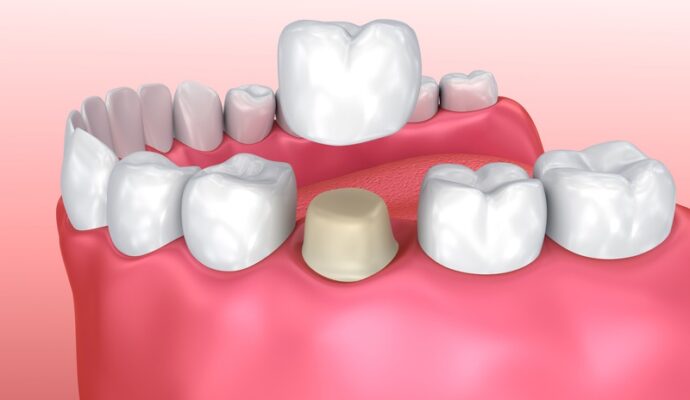Dental phobia can make the thought of visiting a dentist daunting. It’s a silent hurdle many face, potentially compromising their dental health. Fortunately, techniques exist that can calm nerves and transform a dental appointment from a fearful experience into a manageable one.
Dental Phobia
Dental phobia is more than just feeling slightly anxious before a dental procedure; it’s an intense fear that can cause distress and avoidance of dental care. This can lead to a detrimental chain reaction impacting not only oral health but overall well-being too.
Communicate with Your Dentist
One essential step in easing dental phobia is open communication. Being upfront with your dentist about your fears helps them tailor their approach to your needs, ensuring a more positive experience. This simple act can drastically reduce anxiety levels.
Furthermore, clinics offering comprehensive dentist services in Milford understand the value of creating a welcoming environment for patients. They focus on patient-centered care and establish relationships built on trust and understanding.
Practicing Mindfulness and Relaxation Techniques
Mindfulness and relaxation exercises can transform your emotional state. Deep breathing, guided imagery, and progressive muscle relaxation are tools you can use to place yourself in a calmer state of mind and body.
-
Deep Breathing: Slow, deliberate breaths can help lower your heart rate and reduce stress.
-
Guided Imagery: Envisioning a peaceful scene can distract from anxiety and create a sense of calm.
-
Progressive Muscle Relaxation: Tensing and then relaxing different muscle groups can release tension and promote overall relaxation.
Distraction Methods
Distraction is a powerful technique where focusing on something other than the dental procedure can alleviate anxiety. This could be listening to music, watching TV, or holding a stress ball. Your dentist can often provide these distractions, or feel free to bring your own.
Sedation Dentistry
Sedation dentistry is a practice designed to help patients who experience anxiety about dental procedures or who may be undergoing extensive treatments. By using various forms of medication, dental professionals can create a more relaxed and comfortable experience.
The levels of sedation administered can range from mild, allowing the patient to remain awake but calm, to deep sedation, where the patient may be on the edge of consciousness, or to general anesthesia, which renders the patient completely unconscious.
-
Mild sedatives: Typically administered orally or through inhalation, these help to relax the patient while keeping them fully awake and responsive. A common example is nitrous oxide, also known as “laughing gas.”
-
General anesthesia: For complex procedures or for patients with severe dental anxiety, general anesthesia may be used. Under this type of sedation, the patient is entirely asleep and will not remember the procedure afterward.
Choosing the Right Level of Sedation
The level of sedation chosen for a dental procedure is an important decision that will be tailored to each patient’s needs. Factors such as the patient’s level of anxiety, their medical history, and the specific dental work being performed play a role in determining the most appropriate form of sedation. A thorough consultation with the dentist, which may include a discussion about the patient’s fears and concerns, is essential in establishing the right plan for sedation.
-
Customized sedation plans: An experienced sedation dentist will carefully evaluate a patient’s needs and customize the sedation level, ensuring the patient’s comfort and safety during the procedure.
-
Informed decision-making: Dentists should provide comprehensive information on the different sedation options, including the benefits and potential risks, so patients can make an informed choice.
Sedation dentistry is a beneficial option for individuals who feel anxious about dental visits or are facing procedures that might be particularly lengthy or uncomfortable. By offering a range of sedation levels, dentists can alleviate patient stress, making necessary dental care a more accessible and less daunting experience.
Building Positive Dental Experiences
Developing a history of positive dental visits can naturally reduce dental phobia. Starting with uncomplicated procedures can gradually build up your comfort level, creating a foundation for more positive future interactions.
Professional Counseling
Professional counseling or therapy might be considered in cases of severe dental phobia. Cognitive-behavioral therapy (CBT), for instance, is a frequent approach that helps individuals reframe their thinking patterns around dental appointments.
Choosing the Right Dental Practice
Selecting a dental practice that is empathetic towards those with dental phobia can be a game-changer. Look for a practice that highlights patient comfort and has experience in managing anxious patients.
Options for a smile makeover, such as stunning porcelain veneers, can boost self-confidence but require a dental practice adept at easing patient concerns. Adequate support and understanding from the dental team make the journey more approachable.
Create a Routine
Creating a ritual or routine before dental visits can put you in a more relaxed state. This could be as simple as drinking a cup of herbal tea or practicing a few minutes of meditation before your appointment.
The Role of Pain Management
Advancements in dental technology have considerably reduced discomfort associated with various procedures. Utilizing topical anesthetics or painless injection techniques assuages fear and dispels myths about dental pain.
Financial Planning for Dental Implants
Due to the complexity and multi-step process of dental implants, the cost can be a significant concern for patients. It’s an important aspect of your dental care to understand fully, not only to prepare financially but also to ensure that you’re making an informed decision without any surprise expenditures. Proactively seeking dental practices that offer clear and detailed pricing guides for dental implants can go a long way in reducing financial-related stress.
-
Cost transparency: Choose a dental practice that provides an itemized list of all potential costs involved in the dental implant procedure. This can include the surgical implantation, the abutment, the crown, and any additional procedures, such as bone grafting, if necessary.
-
Affordability: While affordability is subjective, some dental offices may offer financing options and payment plans or work with insurance companies to make the process more accessible.
The Value of Dental Implants
While the initial cost of dental implants may be higher than other tooth-replacement options, their durability and functionality often provide long-term value. Understanding the benefits and lifespan of dental implants can help balance the financial considerations with the quality of life and health benefits these solutions provide.
-
Long-term investment: Dental implants can last for many years, even decades, making them a potentially more cost-effective solution in the long term compared to bridges or dentures that may need to be replaced more frequently.
-
Insurance and coverage: Review your dental insurance policy to understand what coverage it may provide for implants, and discuss with your dental provider any potential for insurance to defray part of the costs.
When considering dental implants, be sure to discuss all financial options and considerations with your dental provider. It is also helpful to look into an affordable dental implants guide for a better understanding. This discussion should help create a clearer picture of the investment required and allow you to plan accordingly without the added burden of unexpected costs. Maintaining open communication regarding finances can make the path to a healthier smile a more stress-free experience.
To End
Ultimately, conquering dental phobia is a journey that combines personal coping mechanisms and the right dental team. It’s about finding techniques that work for you, communicating your needs, and selecting a practice that understands and accommodates your anxieties. With the right approach, even those with the most intense dental fears can find relief and receive the care they need.




